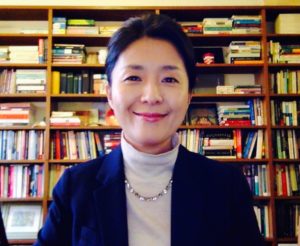
Is My Curriculum White?
Parasite, directed by Bong Joon-ho, is the first non-English-language, subtitled film to win Best Picture in the Oscars’ 92-year history. President Trump censured the award of the foreign film in a February 2020 campaign rally, wanting to get back to the 1939 classic movie “Gone with the Wind” often criticized for its racist stereotypes. The distributor of Parasite immediately responded to the President with a tweet: “Understandable. He can’t read.” In an earlier speech accepting the Golden Globes Foreign Film Award, Bong observed, “Once you overcome the 1-inch-tall barrier of subtitles, you will be introduced to so many more amazing films.” In contrast to #OscarsSoWhite, the US President’s view of Oscars-not-quite-so-white reminds me of the connections between cultural texts and imperialism Edward Said explores in his work. I want to bring this discussion to my teaching context.
When social justice is addressed in the classroom, one may assume that the teacher should discuss particular social issues or subjects that exist outside the classroom. Yet, if social justice is primarily about power, privilege, and oppression, a curriculum is inevitably a site in which social justice issues emerge. Curriculum selects, structures, and reproduces knowledge while authorizing certain constructions of knowledge and hence, producing the truth. How have knowledge and the truth been constructed? The western academy and education are rooted in a modern liberalism that presupposes “human” as the white European male. This ideology is racist and colonialist.
In a Wabash podcast, “After Whiteness,” Willie Jennings points out that western education has been shaped by the dominant image of formation, “becoming”—becoming a “white self-sufficient man” and suggests an alternative view that highlights “belonging.” It was enlightening to understand where my frustration, along with a sense of inferiority, arose throughout my fourteen years of theological education in South Korea and the U.S. What you are going to “become” is not only unidentified but also, instinctively, unattainable.
In my seminary, I was introduced to Luther, Barth, Bultmann, and Moltmann, just to name a few, by all male professors who had earned their doctorates in the U.S. and Europe. In my first year of Master’s studies in the U.S., I couldn’t believe that I was being taught by the prominent male professors whose names I had only seen in books. One of the professors, whom I respected greatly, said to me, “Korean students’ exegesis skills are good, but there is something they lack.” The second part of his words haunted me and I desired to have what I did not have without knowing what it was.
Obviously, the professor did not mean that it is whiteness that I lack. Yet the ghost of whiteness surfaces in classrooms in various forms. The student-led campaign in the U.K., “Why is My Curriculum White?”, argued that the course content at universities served to reproduce the ideology of whiteness. This argument can apply to any discipline which was founded on the work of Anglo-European white males, including theological and biblical studies. What’s wrong with using their profound work that has influenced not only Western civilization and Christianity, but also the minds of people in other parts of the world? Why am I anxious about not using one of the canonized textbooks, which white male scholars authored, for my New Testament introduction course? Because we are speaking about power structures that normalize whiteness and white privilege. Institutional whiteness is incorporated in and reproduced through curriculum. As Jennings reminds us, that is how minoritized students and faculty in religious and theological education suffer the “racially formed sense of inadequacy.”
Including one or two recommended readings written by non-white scholars in the syllabus is not enough, though one may start from there. Multiculturalism often promotes diversity by including a few minority individuals or groups, while still concealing power structures that perpetuate white supremacy and racism. In order to overcome white curriculum, the teacher needs to disclose the effects of racism embedded in the discipline and institutions, dismantle the ideology of whiteness inscribed in the textbook, and develop students’ ability to critically evaluate knowledge.
There are “so many great [white] movies,” as the President said. Breaking “the 1-inch-tall barrier of subtitles” is more than watching a foreign film. Students know, or need to know, how to read subtitles. Can I read? Asking the question of whether my curriculum reads as white is a matter of social justice—the matter of death-dealing or life-affirming in the classroom.
Dr. Greg Carey shared a link to this blog entry on FB. I suppose your comments are mostly directed toward fellow professors. But as a white guy with a white theological education, I’d be interested to know what NT intro text(s) you use instead of the white male canon.